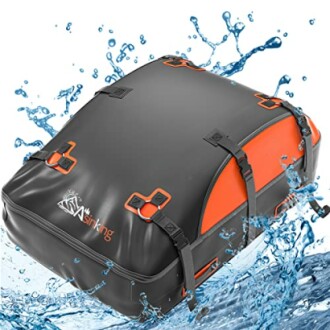
Understanding Load Limits for Roof Racks
Key Takeaways
- Load limits are crucial for safety and vehicle stability.
- Consult your vehicle’s manual and the roof rack manufacturer for specifics.
- Always evenly distribute the load to avoid accidents.
- Regularly check for wear and tear on the rack and accessories.
- Consider local regulations regarding load limits for roof racks.
Roof racks are a convenient way to transport additional gear, but understanding the load limits is essential for ensuring safety and compliance. Many vehicle owners may not realize that exceeding the designated load limits can lead to dangerous situations. In this article, we will discuss how to determine and adhere to load limits when using roof racks for various types of equipment.
What are Load Limits?
Load limits refer to the maximum weight and size of items that can be safely carried on the roof rack of a vehicle without compromising safety or causing damage. These limits are determined by both the vehicle’s manufacturer and the roof rack manufacturer.
How to Determine Load Limits
To ensure safe transportation of your gear, consider the following steps:
- Check Your Vehicle Manual: Most vehicle manuals will indicate the maximum load limit for roof racks.
- Consult Roof Rack Specifications: Each roof rack has its own load ratings which can be found in the product manual.
- Consider the Weight of the Gear: Calculate the total weight of the items you'll be putting on the roof rack.
- Account for Dynamic Loads: Remember that during travel, wind resistance and acceleration can affect the load's stability.
Types of Roof Racks
Various types of roof racks cater to different vehicle types and loads; knowing the characteristics of each can help in selecting the right one:
| Type of Roof Rack | Best For | Load Capacity |
|---|---|---|
| Crossbars | Bikes, boxes, and boats | Up to 150 lbs |
| Basket Racks | Large gear, luggage | Up to 300 lbs |
| Hard-Shell Carriers | Camping gear, sports equipment | Up to 200 lbs |
Understanding Weight Distribution
Proper weight distribution is vital for maintaining vehicle stability. Here are a few guidelines:
- Place heavier items directly over the vehicle's roof structure.
- Secure items tightly to prevent shifting during transport.
- Distribute weight evenly to avoid tipping.
Safety Precautions
Always keep these safety tips in mind when using roof racks:
- Check Load Limits: Regularly verify that your load does not exceed limits.
- Inspect Roof Rack: Before every trip, take a moment to inspect the connections and integrity of your roof rack.
- Use Tie-Downs: Properly securing your load helps avoid accidents.
Recommended Roof Racks and Cargo Carriers
For those in need of reliable cargo management solutions, these products can significantly enhance your vehicle's capabilities:
Asinking Car Rooftop Cargo Carrier Bag
This waterproof bag offers 20 cubic feet of storage, ensuring your gear is protected from the elements.
Learn MoreAsinking Heavy Duty Car Roof Carrier Bag
This 21 cubic feet cargo carrier is designed for all vehicles, making it versatile and reliable.
Explore NowFAQs about Load Limits
Here are some frequently asked questions:
- What happens if I exceed the load limit?
Exceeding the load limit can lead to vehicle instability, increased wear on brake systems, and damage to the roof rack.
- Can load limits change?
Yes, if you modify your vehicle or roof rack, load limits may need to be recalculated.
Conclusion
Understanding load limits for roof racks is essential for safe transportation. By adhering to manufacturer specifications, practicing proper weight distribution, and regularly checking your equipment, you can ensure that your adventures are safe and enjoyable. For more information on selecting the best cargo solutions for your needs, check out our full range of roof racks and boxes.


